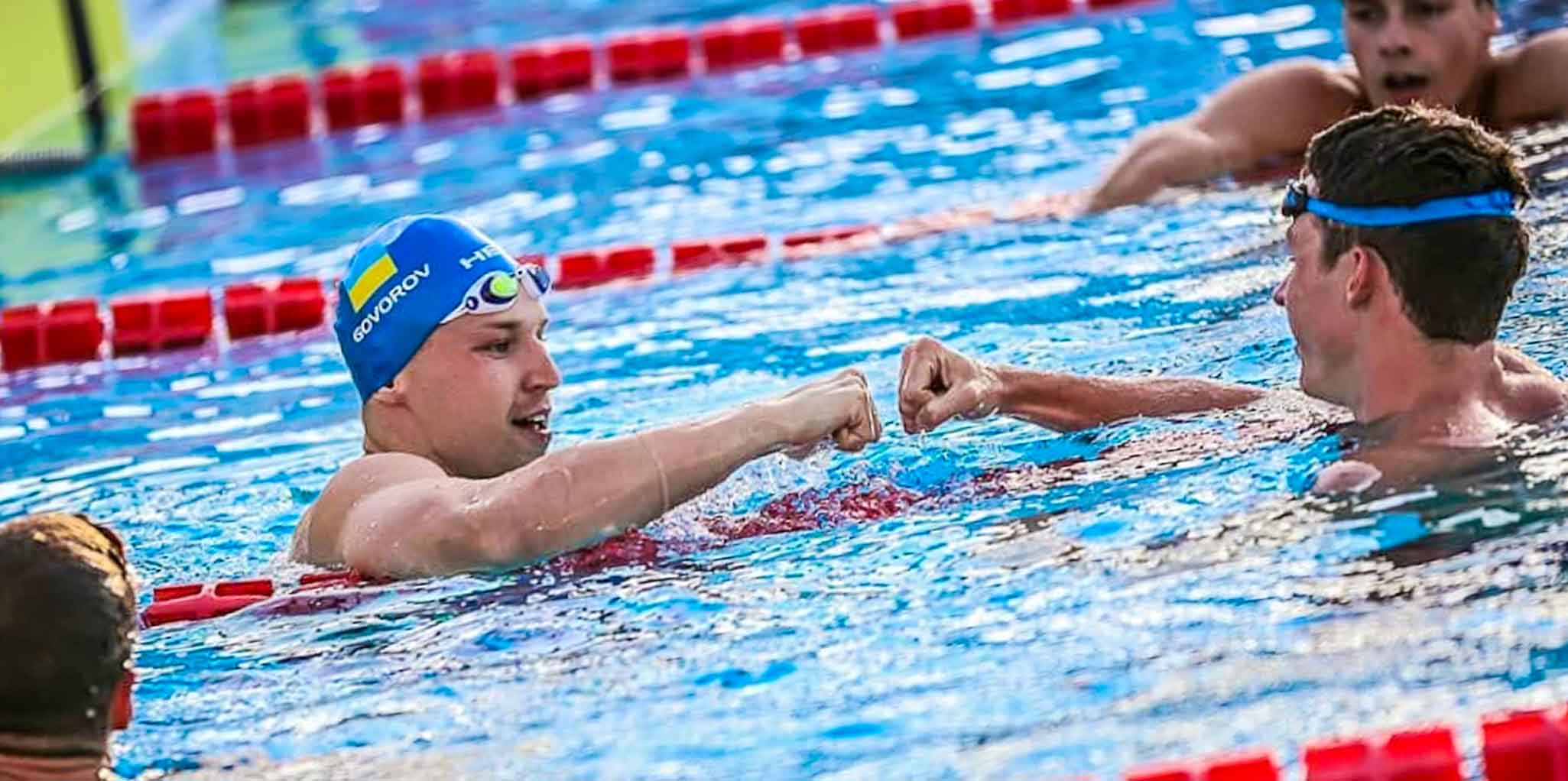Latest since the Budapest 2017 World Championships sprint swimming is all about Caeleb Dressel. With his explosive starts and his dominant underwaters the US athlete just seems like the perfect athlete for short distance swimming. But he’s facing some tough competition. In the 50m butterfly for example he had to settle for fourth place in Budapest and now one of his opponents is sending a loud message across the Atlantic Ocean:
With his world record of 22,27 seconds in the 50m butterfly at the Sette Colli Trophy in Rome, Andrey Govorov delivered one of the most impressive swims of the year so far. With data provided by the Institute for Applied Training Sciences (IAT) in Leipzig, Germany we analyzed how the Ukrainian sprinter did that.
When you compare Govorov to Dressel you can see that the way they both swim the 50m butterfly couldn’t be any more different. Whereas Dressel benefits from his qualities at the beginning of the race, Govorov’s advantage clearly lies within the second 25 meters. At the World Championships semi-final Dressel delivered the fastest first 15m ever in 4,92 seconds, which was already 3,8 tenth of a second faster than Govorov at his best swim in Budapest. With every stroke the gap gets smaller. At the end Govorov’s fastest time (22,84) at the World Championships was just 0,9 tenth of a second slower than Dressel’s personal best, which means he was 0,28 seconds faster than Dressel on the last 35m.
But how did Govorov manage to improve his time by more than half a second? Since last year the Ukrainian perfected his ability to hold a high speed towards the end of the race. During the last 15m at the World Championship final he slowed down from 2,00 m/s to 1,94 m/s. But at his world record swim last week he was able to keep his speed at 2,00 m/s until the end of the race. He did this by using less but more powerful strokes throughout the race.
The second key to his world record performance is Govorov’s transition from underwater to stroke. During the last years the world record holder has been constantly improving his first 25m, which are still far from perfect. Nearly all sprinters use their kicks to the maximum, being underwater the whole allowed 15 meters. Not Govorov. His head usually breaks the surface of the water already at 12 meters, even for his world record swim. Compared to his previous races, Govorov is now able to take much more speed into his swimming strokes. At his world record swim in 9,98 seconds he was 0,12 seconds faster in the first 25m then in Budapest, which is by the way exactly the same time Caeleb Dressel swam the first 25m when he did his best time. However, Dressel got slower and Govorov didn’t.
The race stats:
| time (seconds) | Andrey Govorv WORLD RECORD 2018 |
Andrey Govorov FINAL WC 2017 |
Caeleb Dressel Semi-Final WC 2017 |
| 5m | 1,30 | 1,32 | 1,28 |
| 15m | 5,22 | 5,34 | 4,92 |
| 25m | 9,98 | 10,10 | 9,98 |
| 25-50m | 12,29 | 12,74 | 12,78 |
| 50m | 22,27 | 22,84 | 22,76 |
| speed (m/s) | |||
| 5 - 15m | 2,55 | 2,49 | |
| 15 - 25m | 2,10 | 2,10 | |
| 25 - 35m | 2,02 | 2,00 | |
| 35 - 45m | 2,00 | 1,94 | |
| stroke rate |
|||
| 15 - 25m | 64 | 66 | |
| 35 - 45m | 62 | 63 |
Data source: Institute for Applied Training Sciences (IAT) Leipzig
So the world record race of Govorov is a combination of two things: Minimizing your weaknesses and enhancing your strengths. The result: the fastest fly swim ever in an Olympic sized pool.
Picture: David Kibert

